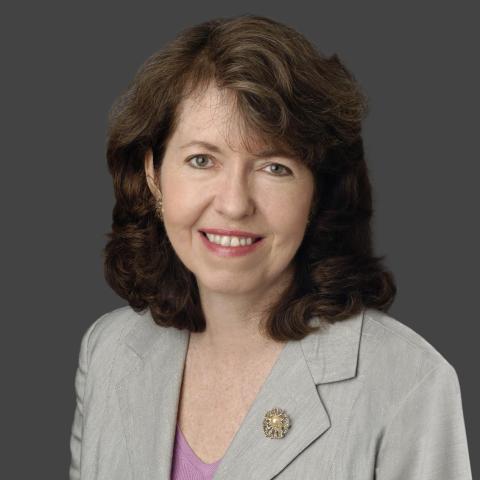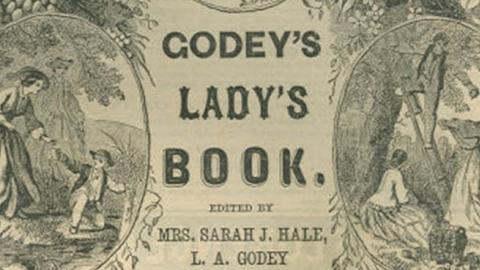If the female teachers of America had a patron saint, her name would be Sarah Josepha Hale. The celebrated 19th-century editor of Godey’s Lady’s Book is best known as the author of “Mary Had a Little Lamb” and for her campaign for the creation of a national Thanksgiving holiday. But Hale herself saw her paramount mission as education for women. Over the course of her half century of journalism, no issue of the periodicals she edited went to press without Hale hammering home her revolutionary themes: Women are the intellectual equals of men. Women deserve to go to college. Women should be able to work for a living.
Hale began her work in 1828, when only half of American women could read and there wasn’t a single institution of higher education that admitted women. The prevailing view was that women lacked the intelligence and moral stature to be successful teachers. Her advocacy helped change the national conversation about women’s roles—especially their suitability for the classroom. Hale believed that the two sexes had equal intellectual capabilities but lacked equal educational opportunities. A correctly educated woman could teach as well as an educated man. “There is no branch of learning taught in our common [public] schools, which females would not be capable of teaching,” she wrote. This was a radical idea in the 1820s.
Having run a successful school for small children before her marriage—not to mention her experience as the mother of five—Hale developed strong ideas about how to teach. She believed that children learned best when they developed at their own pace and that self-instruction, guided by a teacher, was the most effective way to absorb knowledge. Good teachers helped pupils learn how to learn. She believed, too, that young children learned best when they were entertained—that is, with music or lively stories that held their attention. “The business of instruction,” she wrote, must be “esteemed amiable.” It “must be divested of its associations of pretension and pedantry, and dullness and drilling.” Her educational theories aligned with those of Swiss pedagogue Johann Heinrich Pestalozzi, whose work she often cited.
Hale’s theories about how to teach were based on her concept of childhood, which she idealized as a time of vulnerability, openness and freedom. She believed that children were not mini-adults—as had been a prevailing assumption until recently. They were, rather, unformed beings receptive to a variety of influences, good and bad. It was a period of life when mothers, teachers and other adults with whom a boy or girl interacted had a responsibility to help shape the character of the growing child and set him on the right path. Hale filled the pages of her magazines with articles, short stories, and poetry that expounded on these ideas, which were progressive in her day, along with her theories about the value of self-instruction and entertaining pedagogical techniques.
Hale put her beliefs into action in her writing for children. Her juvenile poetry and short stories were a departure from the moral didacticism that characterized most writing for children until the early nineteenth century. Rather, they were child-centered and provided an engaging blend of entertainment and moral instruction. They almost always carried a message or provided some factual information, but they also engaged the imagination. (A now-forgotten verse of “Mary Had a Little Lamb” exhorts children to be kind to animals.)
Following the lead of Horace Mann, the innovative secretary of the Massachusetts state board of education, Hale advocated for the establishment of schools of education, or normal schools. If young women were to become effective teachers, she wrote, they needed a professional education in pedagogy and curriculum. She petitioned Congress to grant land to individual states for the establishment of free normal schools for women. Sixty thousand teachers are needed to educate the two million children who now lack the opportunity to go to school, she wrote to Congress in 1853. Normal schools were the most efficient way to prepare young women to become teachers. She also wrote to individual members of Congress urging them to enact legislation granting federal land to every state for the purpose of building free normal schools. The only way to meet the pressing need for public school teachers in the expanding country, she argued, was to train and hire young unmarried women. Not only did women make better teachers than men, but they cost less. Single women could be paid half the salary of married men.
She had made the same points in the 1820s, arguing that the only way the country could afford to offer universal education was to hire women, who would work for lower wages than men. She reprised the argument in the 1840s when she supported Catharine Beecher’s proposal to send educated young women from the East to the West to fill the pressing need for teachers in frontier towns. Unlike women, men had other career options, Hale rightly noted. Teaching wasn’t at the top of the list of men’s preferred work, when “The Great West, the mines of California, and . . . China and the East, are inviting them to adventure and activity.” Ultimately, Congress never enacted legislation providing land grants for normal schools.
In the 1860s, Hale also turned her attention to opening doors for women teaching at the college level. As a close adviser to Matthew Vassar on the founding of all-female Vassar College in Poughkeepsie, N.Y., she lobbied for the appointment of women to the faculty. Vassar was receptive to her idea, but the college trustees were skeptical that they could find qualified female teachers. The outraged editor had her scholar-son Horatio Hale write an unsigned article for Godey’s Lady’s Book scoffing at the suggestion that there was a lack of women with the intellectual and educational accomplishments to teach at Vassar. Just advertise, he advised, and you will have a flood of inquiries from qualified applicants. He also put forward the moral argument that an all-male faculty would send a discouraging message to scholarly undergraduates that they would be unfit to teach at their own college after completing their studies. Horatio was his mother’s voice here. She was having trouble with her eyes, and she enlisted Horatio, who knew her thinking, to write for her. When Vassar College opened its doors in 1865, two of the eight professors were women. Of the thirty-five assistant teachers, thirty were women.
Hale’s advocacy on behalf of female teachers was just one of the many areas she pursued on the subject of women and education. A strong advocate of early childhood education, she started what is sometimes called the first kindergarten in the U.S. She founded the first daycare center for working women. She created the term “domestic science” and urged the creation of schools of home economics as a way to professionalize the work of women who worked in the home. She urged readers to study chemistry, biology, geology, physics, minerology, and other sciences—subjects that traditionally were considered too taxing for the female intellect. She published reading lists and self-study advice for readers who wished to extend their knowledge and improve their minds. She pushed for public funding of institutions of higher education for women. She supported vocational training for women to learn specific skills such as nursing or needlework. Her magazines were the go-to source for learning about new schools for women, educational philosophy, teaching techniques, innovative educators, and more.
As for teaching, by the 1840s, young women were entering the profession in unprecedented numbers. By the 1850s, a majority of schoolteachers were women. Attitudes about female teachers had done an about-face, and the feminization of the teaching profession was under way.
The most recent data available from the U.S. Department of Education show that the public school teacher workforce remains about 76 percent female to this day. Economists, union leaders, and school boards may debate and negotiate over whether teacher pay nowadays reflects a gender discount that has persisted, and if it does, whether students have suffered as talent has flowed to other fields. There’s no question, though, that any student starting the school year in a class with a woman teacher is entering a learning environment shaped by Sarah Josepha Hale.
Read in Education Next















